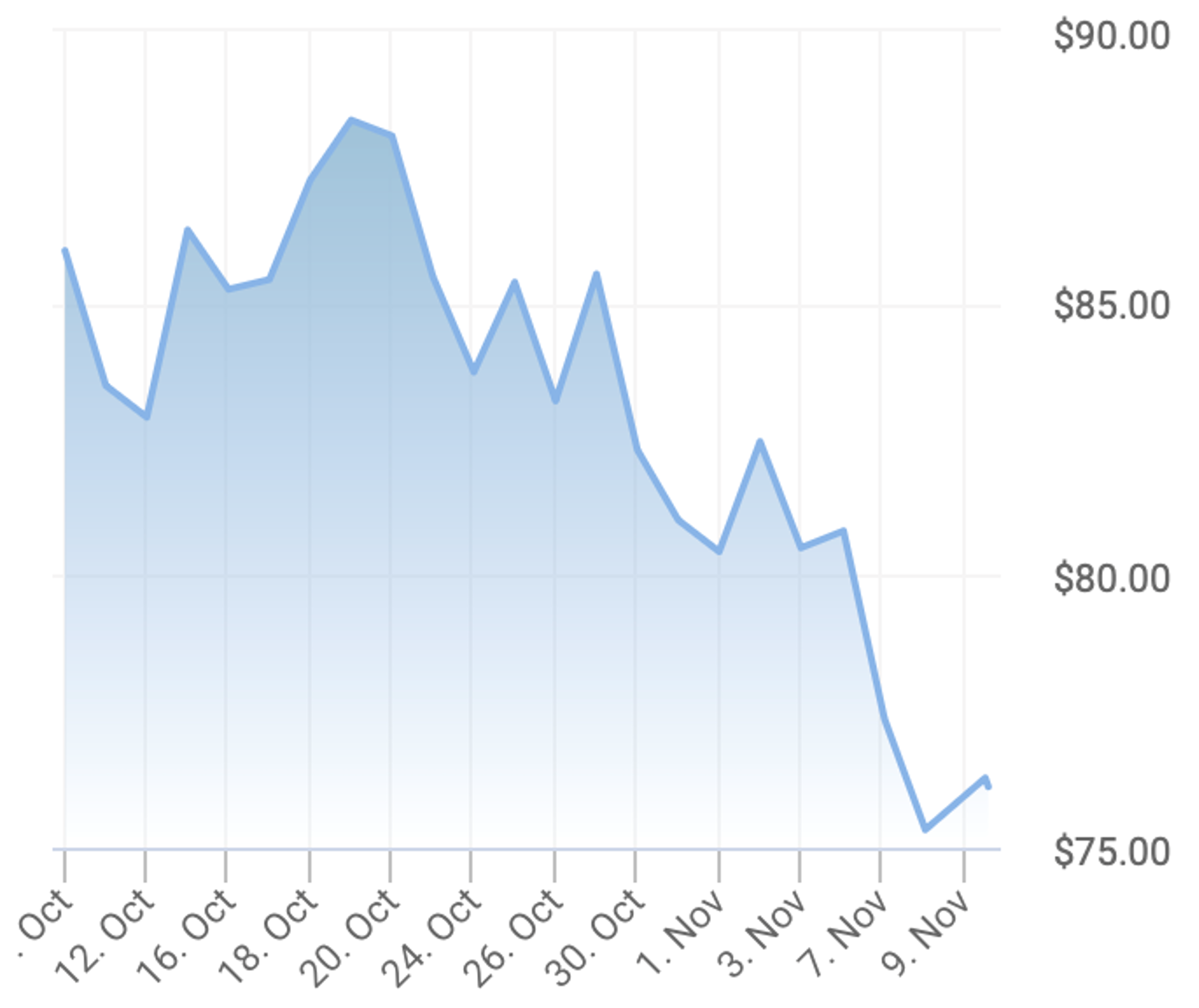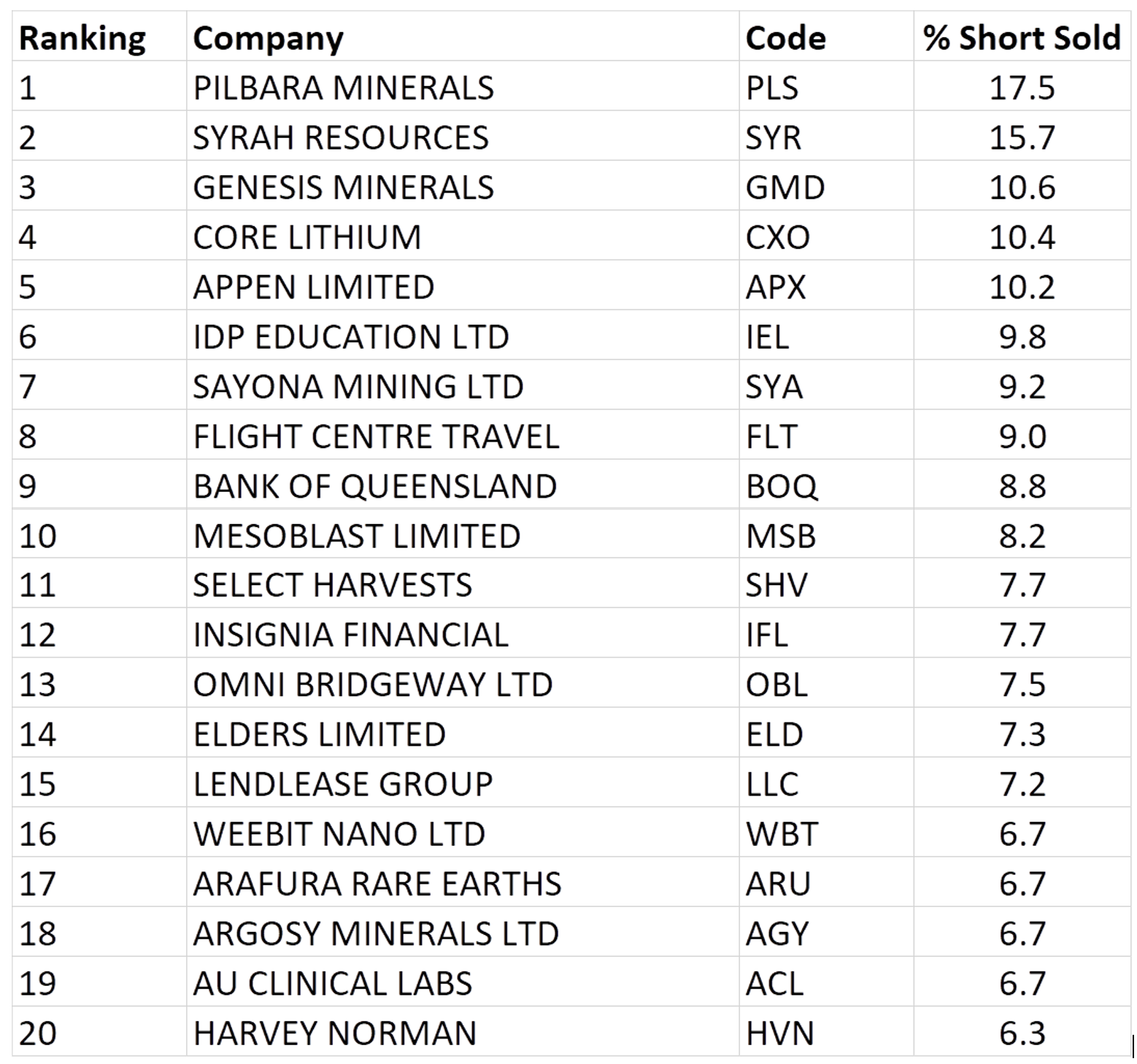
On Thursday US time, Wall Street stressed out when Jerome Powell stated the bleeding obvious for a central banker who’s possibly beaten inflation down to a good level, but not exactly where you want it to be. Simply put, he subtly warned that he’ll raise interest rates if the data says he has to. And guess what? Our pathetic follow-the-leader stock market played follow the leader.
This meant we finished negative for the week, while the US key market indexes finished in positive territory. What happened this week, following what happened last week, is really worth understanding if you care about where the market and your investments head from here and next year. (On Monday I’ll share the discussion I had about 2024 with Rudi Filipek-Vandyck of FNArena, which will be shown in full next week on Switzer Investing TV.)
Recall that the Fed boss Jerome Powell said a lot last week to make markets think that possibly the US has seen the last interest rate rise in this cycle, and that somewhere in 2024 the Yanks should see a rate cut. The bond markets responded with lower yields, and this is good for stocks and yep, until Thursday, share markets followed the predictable script.
Then on Thursday, Powell spoke at the International Monetary Policy conference in Washington and told the delegates there that if it became “appropriate” to tighten monetary policy further, the Fed would “not hesitate to do so”.
“We will continue to move carefully… allowing us to address both the risk of being misled by a few good months of data, and the risk of overtightening,” Mr Powell told the conference, before adding that the central bank was still “not confident” that rates were high enough to return inflation to their 2% target. (AFR)
This led Tapas Strickland, NAB’s head of market economics, to say this: “That brings in the spectre of the possibility of a further rate hike, which markets had been discounting for a while.”
But this is a “well, der” moment in the short-term market madness we have to deal with when your material future is linked to that crazy ‘casino’ called the stock market! A friend of mine is part-owner in this year’s Golden Slipper winner, Shinzo, who has had three good reasons this Spring for not winning against the horses in the country and possibly the world, when it came to the Everest. Each time I discussed the unlucky event that besot the horse, I couldn’t help but utter that old industry chestnut: “That’s racing.” Looking at this week’s silly reaction to Powell’s uttering of the bleeding obvious, especially for a central banker, that Friday sell-off, which I bet is followed by buying on Monday locally, should be simply summed up as: “That’s investing!”
Of course, it’s not really investing, it’s more speculation. The short-term market moves are hip-pocket reactions from those who make money from trades. This is very different from an investor who saw CSL at $248 on Wednesday and then bought it because they saw this as a great entry price for a long-term player of stocks.
Back to Powell… and why wouldn’t he warn the market that if economic data gets too positive that he’d give the US economy another rate rise? This is called jawboning. It’s a weapon that central bankers use when they want to scare speculators, consumers and business price-setters that, if needs be, they will act. And Thursday’s sell-off shows how jawboning works to hose down situations that might undermine the successful work of the Fed in getting inflation down to 3.7%. But Powell wants 2%.
If the economics team at ING Think are right, he could see that low number early next year. Here’s their view on US rates: “After encouraging inflation data in early summer, progress stalled in August and September amid robust consumer activity. But with tighter financial and credit conditions set to weigh further on corporate pricing power, supplemented by slowing rents and falling gasoline and used car prices, we expect to see inflation move close to 2% in 2Q.”
That’s why Jerome Powell is prepared to jawbone US markets until the data brings home the bacon. What his comments have done is slow down market momentum. As long as upcoming economic data reinforces the belief that 525 basis points (or 5.25%) of rate rises since March 2022 will be enough to take inflation down, then there’ll be no more rate rises in the US.
Once this seems irrefutable, stocks will take-off, but Powell wouldn’t want “irrational exuberance” (as former Fed chairman Alan Greenspan once called it) to ruin his work. Hence, his wise old owl warning on Thursday. But by Friday, those who think like me saw it as a time to buy.
Overnight, US stocks were higher and as I’ve been tipping, it was powered by tech, with the Nasdaq delivering big time, as the table at the start of this Report shows. Helping many believe inflation can be tamed has been the big fall in the price of oil this month, which is down about 13% since October 20. (This should help the October CPI here in Australia and also might stop our RBA giving us more unnecessary rises in rates.) By the way, Mr Powell got some economic news that would have made him think his rate rises are still working to tame the inflation dragon, with the University of Michigan consumer sentiment index showing a reading of 60.4, down 5.3% from 63.8 in October and below the Dow Jones estimate of 63.7. This means the current conditions index fell 6.9% from a month ago and suggests consumers aren’t going to play ball with those wanting to raise prices on consumer goods and services.
We need to see better signs that the RBA’s rate rises are hitting and hurting more than just those with variable interest rate home loans or those who are now copping higher rents.
To the local story and the S&P/ASX 200 index was off a mere 1.7 points (or 0.02%), to finish at 6976.50 for the week. If it wasn’t for Powell’s Thursday warnings, we would’ve had a positive week.
Banks had a mixed five days’ trade, with the CBA up 1.4% to $101.32, but NAB lost 2.2% to $28.46, Westpac gave up 4.2% to $20.86, while ANZ lost 0.7% to $25.47.
Lithium continued to struggle, with Pilbara Minerals off 7.8% for the week to $3.51, while Liontown, still feeling the Gina Rinehart trumping, lost 12.2% to $1.50!
For those not liking the lithium love loss, it might be worth remembering that Macquarie’s analyst sees a 102.2% rise to $7.10 ahead! It will take time for lithium to be re-loved but I reckon it will happen. Meanwhile, both Macquarie and Bell Potter see Liontown’s share price 80% plus higher down the track. Still in the mining game, Mineral Resources fell 5.7% for the week to $58.35, after forking out close to $60 million plus royalties to secure lithium, nickel, copper and cobalt rights to Pantoro Limited’s Norseman gold project in Western Australia.
What I liked
- The US reaction to what the Fed’s chairman Jerome Powell said last week.
- The RBA expects annual inflation to be 4.5% in the fourth quarter of this year and 3.5% in the fourth quarter of 2024.
- Long-term bond yields continued their recent declinesbut what Jerome Powell said this week didn’t help. Lower bond yields are good for stocks.
- Oil prices declined as the West Texas Intermediate (WTI) futures prices fell to US$75.66 per barrel – its lowest level since July. This might suggest China will slow in 2024 but I reckon Beijing will spend to speed up growth.
What I didn’t like
- What Jerome Powell said this week, which spooked an easily spooked market.
- Several US Fed officials spoke this week, emphasising the need to get consumer prices down to the 2% target.
- The RBA’s decision to raise the cash rate to 4.3%. This should be the last rise.
- As a consequence of this rate rise on Cup Day, CBA’s group economists believe that it will be at least 12 months before cash rates start to ease. But just like other central banks from developed economies, the RBA is now very much data dependent.
- Retail sales in the EU contracted for the third consecutive month in September, falling 0.3% in the month. Retail spending has now contracted for six of the first nine months of this year.
- Chinese economic data isn’t great news for our iron ore miners.
Data will be everything in coming weeks
Be clear on this: data will be everything for where stock prices go. This week, there are some big data drops for the market. Locally, we need to see consumer and business confidence, wage rise statistics and the jobs report, with higher unemployment needed to stop the RBA thinking about another rate rise in December or February.
The Yanks will get a plethora of data telling us whether their economy is slowing, but China’s monthly readings for October will be closely watched by those hoping Beijing can get the world’s second biggest economy to grow faster for 2024. That would be good news for our economy and our iron ore miners in particular.
Switzer TV
- Boom Doom Zoom: 9th November 2023
- SwitzerTV: 6th November 2023
Switzer Report
- Here’s why Breville & Endeavour are worth adding to your portfolio watchlist
- “HOT” stock: Macquarie (MQG)
- Questions of the Week
- Is this the much-predicted turnaround for stock markets?
- Our portfolios outperform in soft market
- “HOT” stock: Macquarie Bank (MQG)
- 3 top cancer fighters
- Buy, Hold, Sell — What the Brokers Say
The Week Ahead

Top Stocks — how they fared

Chart of the Week
WTI Crude: Oil prices are falling!

Revelation of the Week
On oil, ING analysts Warren Patterson and Ewa Manthey said the following, in a note to clients: “The market is clearly less concerned about the potential for Middle Eastern supply disruptions and is instead focused on an easing in the balance.” This means supply is increasing while demand is easing. CNBC reported that “…data from China, the world’s biggest crude oil importer, showed its total exports of goods and services contracted faster than expected, feeding worries about the energy demand outlook.”
Stocks Shorted

Disclaimer
Important: This content has been prepared without taking account of the objectives, financial situation or needs of any particular individual. It does not constitute formal advice. Consider the appropriateness of the information in regards to your circumstances.

